A leaky roof can be a homeowner’s worst nightmare, causing water damage to the home’s interior and potentially leading to costly repairs. Water damage can be incredibly frustrating, leading to mold, mildew, and rotting materials.
A leaky roof can also lead to higher energy bills, as the insulation in the roof can become saturated and lose effectiveness. Luckily, fixing a leaky roof is not as daunting as it may seem. With some basic DIY knowledge and a few simple tools, you can confidently take on the task of fixing a leaky roof.
We will provide you with a steps guide on how to fix a leaky roof, including identifying the source of the leak, assessing the damage, and repairing the leak. We will also discuss some preventative measures that you can take to avoid future leaks and prolong the life of your roof.
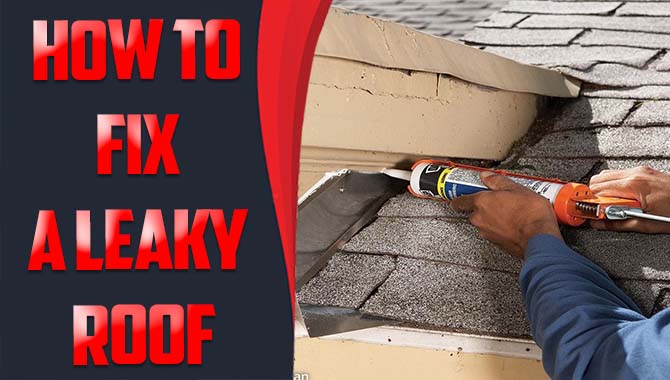
What Is A Leaky Roof?
A leaky roof is when holes, cracks, or missing shingles let water seep into the house, causing damage to walls, ceilings, and floors. Some common causes of a leaky roof include damaged or missing shingles, cracks in the roof, clogged gutters, and poor installation.
If left untreated, a leaky roof can lead to more severe issues such as mold growth, structural damage, and electrical problems. It is essential to address a leaky roof immediately to prevent further damage. Regular maintenance and inspections can help to prevent leaks from occurring in the first place.
How To Fix A Leaky Roof: 6 Easy Steps
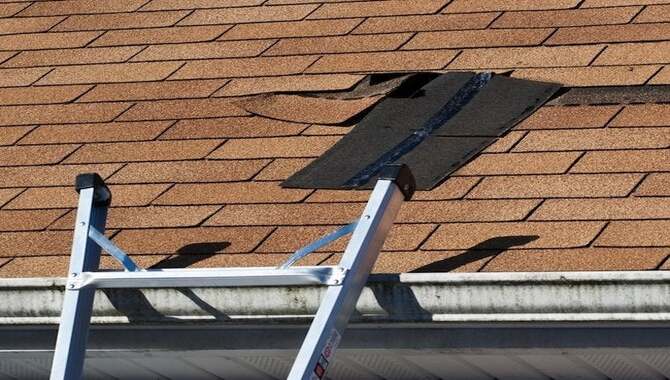
If you have a leaky roof, it’s essential to address the issue immediately to prevent further damage to your home. While fixing a leaky roof may seem like a daunting task, there are steps you can take to make the process easier. Fortunately, fixing a leaky roof can be a relatively straightforward process if you follow these six easy steps on how to fix a leaky roof:
- Identify the source of the leak – Look for any visible damage on the roof and try to pinpoint where water may be entering your home.
- Gather necessary tools and materials – You’ll need roofing cement, a putty knife, roofing nails, and possibly new shingles or flashing.
- Clear the area around the leak – Remove any debris or lost shingles to have a clean workspace.
- Apply roofing cement – Use a putty knife to apply roofing cement over the damaged area, covering it completely.
- Replace shingles or flashing – Replace any damaged shingles or flashing with new ones.
- Monitor for leaks – After completing the repair, monitor the area for any signs of continued leaking.
How To Identify A Roof Leak?
Identifying a roof leak can be a daunting task for homeowners. However, some telltale signs can help you identify a potential leak. One of the most obvious signs is water stains on your ceiling or walls. If you notice any discolored areas or peeling paint, it could indicate a leaky roof.
Another indicator is dampness or moisture in your attic or crawl space. If you notice mold growth or musty smells, it’s time to investigate further. Additionally, if you see any missing or damaged shingles on your roof, it’s essential to have them repaired as soon as possible to prevent leaks from occurring.
By being vigilant and watching for these warning signs, you can identify a potential roof leak early and take action to prevent further damage to your home.
Repair Or Replace The Leaky Roof?
Deciding whether to repair or replace a leaky roof can be challenging for homeowners. While repairing the damaged area may seem more cost-effective, it is essential to consider the roof’s overall condition. If the roof is old and has multiple areas of damage, replacing it may be a better long-term investment.
Additionally, if the damage is extensive or there are underlying structural issues, replacing the entire roof may be necessary to prevent further damage and ensure the safety of your home. Ultimately, it is best to consult with a professional roofing contractor who can assess the extent of the damage and provide recommendations on whether to repair or replace your leaky roof.
Common Causes Of Roof Leaks
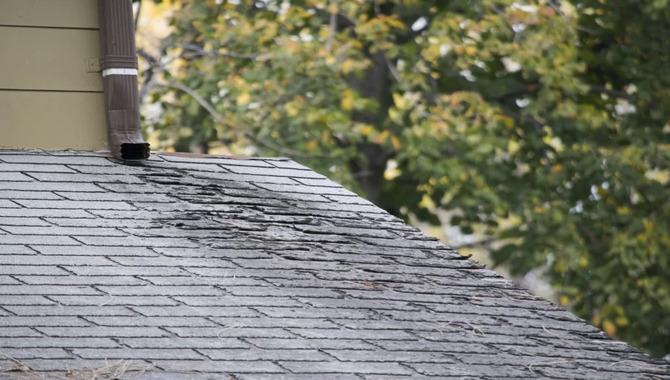
Roof leaks can be a major headache for homeowners. They can cause damage to your property and lead to costly repairs if not addressed promptly. The most common causes of roof leaks include damaged or missing shingles, clogged gutters, and improper installation of flashing around chimneys, skylights, and vents.
Additionally, heavy rainfall and snow can put extra stress on your roof and increase the likelihood of leaks. To prevent roof leaks from occurring, it is essential to regularly inspect your roof for any signs of damage and address any issues as soon as possible. This can help extend your roof’s life and protect your home from potential water damage.
Maintain Your Roof To Prevent Future Leaks
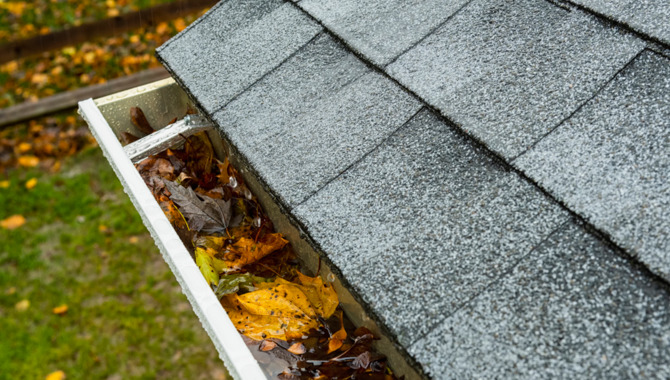
Regular maintenance of your roof is crucial to prevent future leaks. Inspecting your roof at least once a year, preferably in the spring or fall, is essential to check for any signs of damage or wear and tear.
Look for cracks, missing shingles, or discolored areas that could indicate water damage. Clean out gutters and downspouts regularly to ensure proper drainage and prevent water from pooling on your roof.
In addition to regular inspections, addressing any issues as soon as they arise is essential. If you notice a leak or damage to your roof, don’t wait to have it repaired. Ignoring the problem can lead to further damage and more costly repairs.
- Prevent future leaks and damage to your home with regular roof maintenance.
- Get a free inspection and estimate to see if now is the time for roof repairs or replacement.
By taking these simple steps to maintain your roof. You can help prevent future leaks and ensure the longevity of your home’s most important asset.
Tips For Fixing A Leaking Roof Effectively
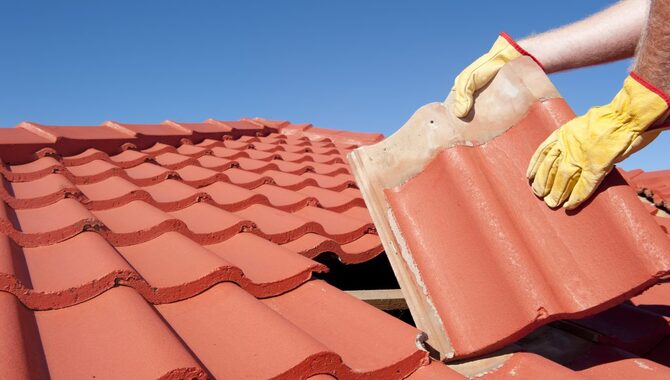
Several tips can help ensure an effective repair when fixing a leaking roof. First and foremost, it is essential to identify the source of the leak before attempting any repairs. This may require investigative work, such as inspecting the attic or crawling on the roof to look for damage.
Once you have identified the source of the leak. You will need to gather the necessary tools and materials for the repair. This may include roofing cement, sealant, and replacement shingles or tiles.
When making repairs, following proper safety procedures, such as using a harness or safety rope when working on a steep roof, is important. Additionally, using high-quality materials and taking time with the repairs is essential to ensure they are done correctly.
If you are unsure how to fix a leaking roof, it may be best to consult a professional roofing contractor who can guide and assist with the repair process.
How Much Will It Cost If Consult A Professional Roofing Contractor?
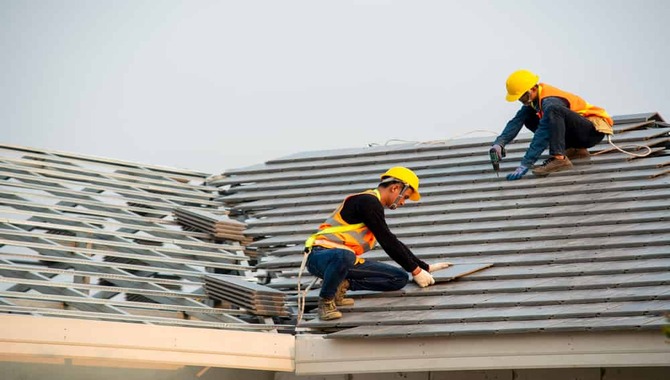
Investing in a new roof is a significant expense, and ensuring the job is done right is important. One major benefit of hiring a professional roofing contractor is their expertise and experience. They have the knowledge and skills to assess your roof’s condition. And they’ll recommend the best materials for your needs and install your new roof properly.
The cost of consulting a professional roofing contractor varies depending on several factors. The size of the project, the type of roofing material used, and the location of the property. The hourly rate of a roofing contractor can range from $50 to $100. While the cost of a complete roofing installation can range from $5,000 to $20,000 or even more.
We recommend making an informed decision to get multiple quotes from different contractors and compare their prices, services, and experience. Remember that hiring a professional roofing contractor is an investment that can save you money in the long run by avoiding costly repairs and ensuring the longevity of your roof.
Conclusion
fixing a leaky roof is not something that can be ignored. It is essential to take immediate action to prevent further damage and protect your home from the elements. Whether you choose to repair or replace your roof, it is crucial to have a plan and follow the steps carefully.
Regular roof maintenance can help prevent future leaks and extend the life of your roof. If you suspect you have a roof leak, identify it promptly and take action before it becomes a more significant problem.
Whether you tackle the job yourself or hire a professional roofing contractor, following best practices and safety guidelines on how to fix a leaky roof is essential. This’ll help to protect yourself, your property, and your investment in your home. By promptly diagnosing and addressing a leaky roof, you can avoid more extensive damage, costly repairs, and potential safety hazards down the road.
Frequently Asked Questions
[rank_math_rich_snippet id=”s-6f35c9d0-34b0-486a-8082-4e72580379a3″]

I am passionate about home engineering. I specialize in designing, installing, and maintaining heating, ventilation, and air conditioning systems. My goal is to help people stay comfortable in their homes all year long.
